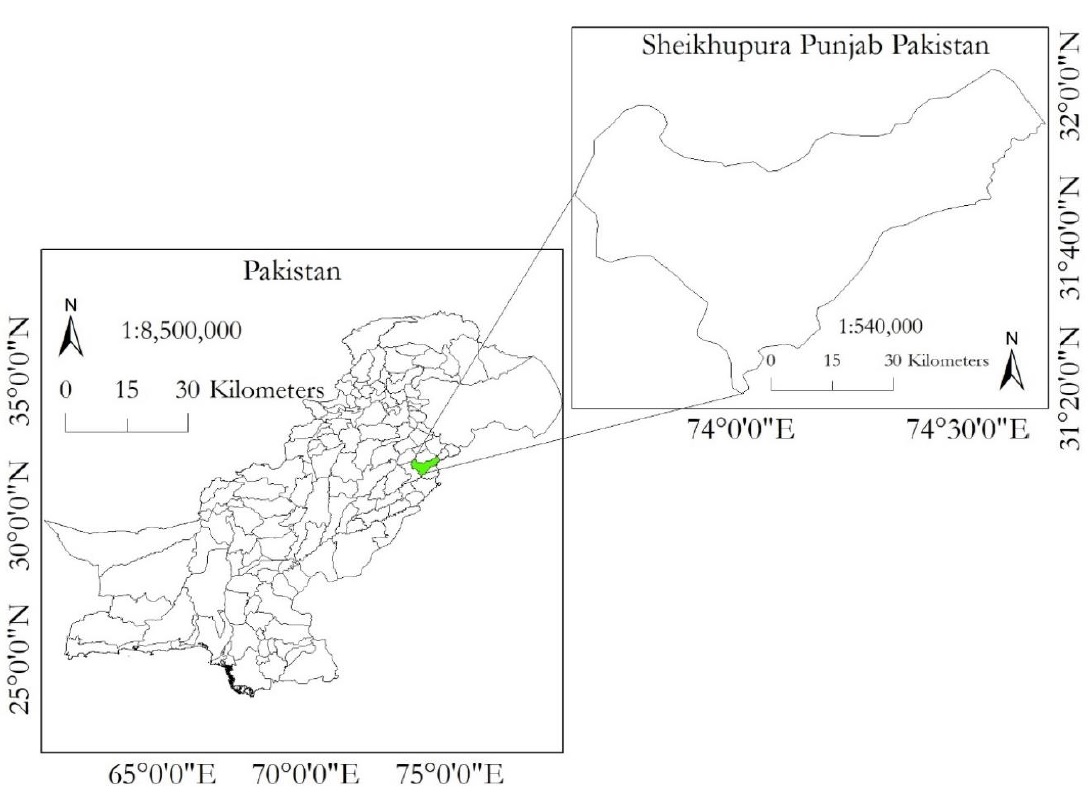Identification of Potential Sites for Rice Plant Growth using Multi Criteria Decision (MCE) Technique Through Remote Sensing and GIS
Keywords:
Gross Domestic Product (GDP), Multi-Criteria decision analysis, Suitability zones, anthropogenic activities, GISAbstract
Rice is one of major corps grown in Pakistan. It is considered as the backbone of Pakistan’s economy. Almost all the rural population of Pakistan is involved in rice preparation from its germination to final harvest. Although its contribution is less in Gross Domestic Product (GDP) of Pakistan, however efforts are on the way to enhance its productivity. The land of Punjab Pakistan produces rice of export quality which is famous throughout the world. Rice crop growth promoting parameters are considered essential to achieve high yield e.g., temperature, humidity, pressure, soil pH, soil type, drainage and electric conductivity. We used Multi-Criteria decision analysis to map temperature base and soil-based rice friendly zones. The results show that the total area under investigation was 3151km2, out of which 2075 km2 was observed highly suitable, 772 km2 was moderately suitable and 303 km2 was not suitable for rice cultivation. On ground validation, it was observed that the areas which were not suitable for rice cultivation, were actually urban area. The urban areas had high temperatures due to anthropogenic activities and fossil fuel emissions. Remote sensing and GIS techniques proved efficient in mapping the suitability zones for rice crop.


















